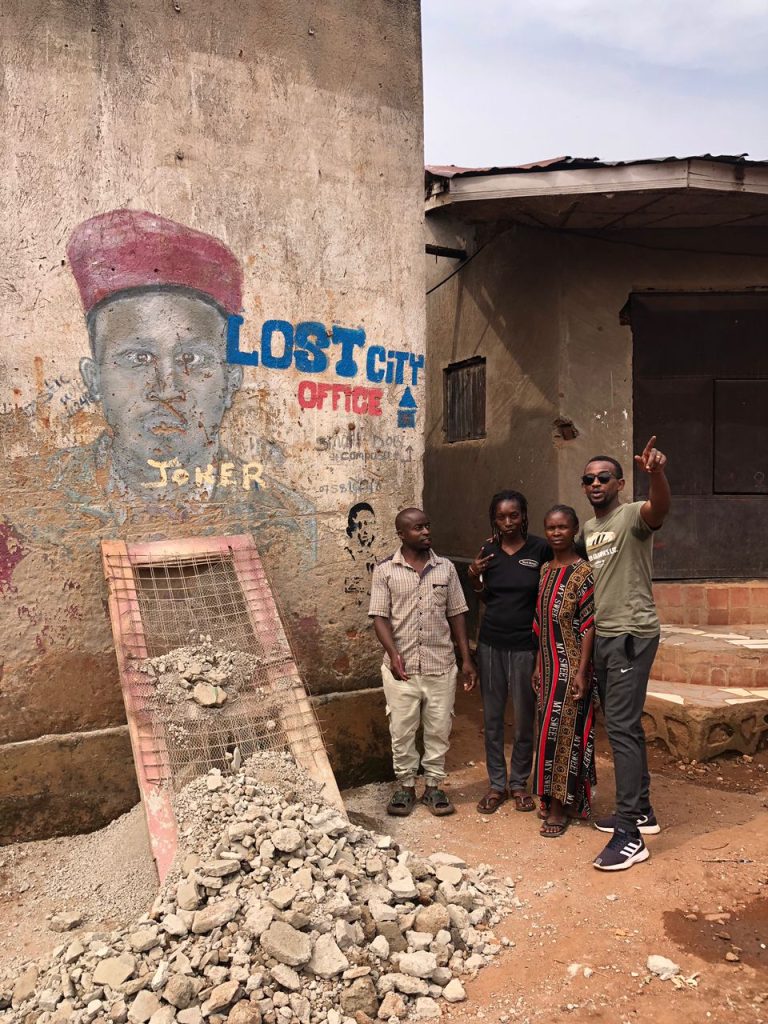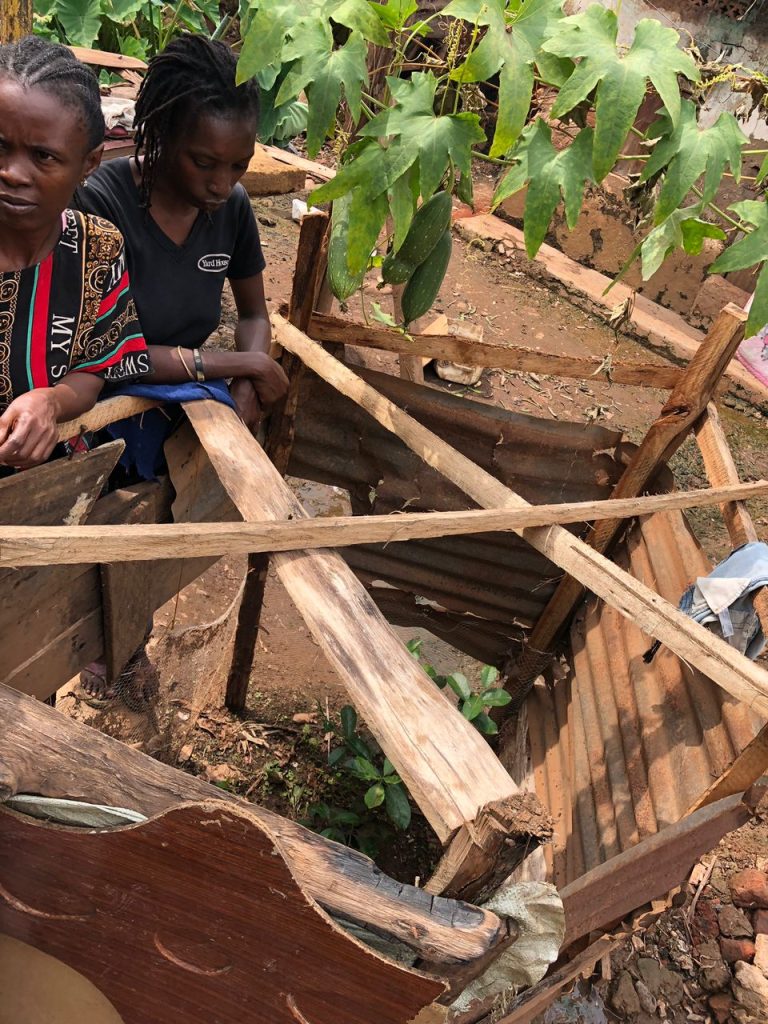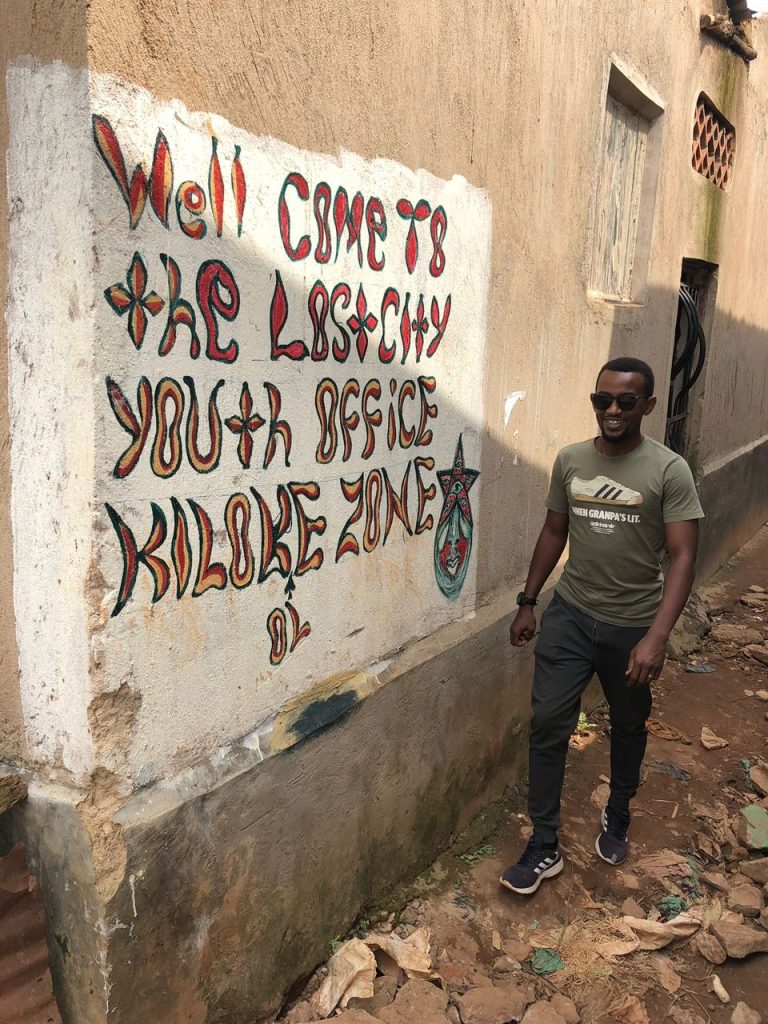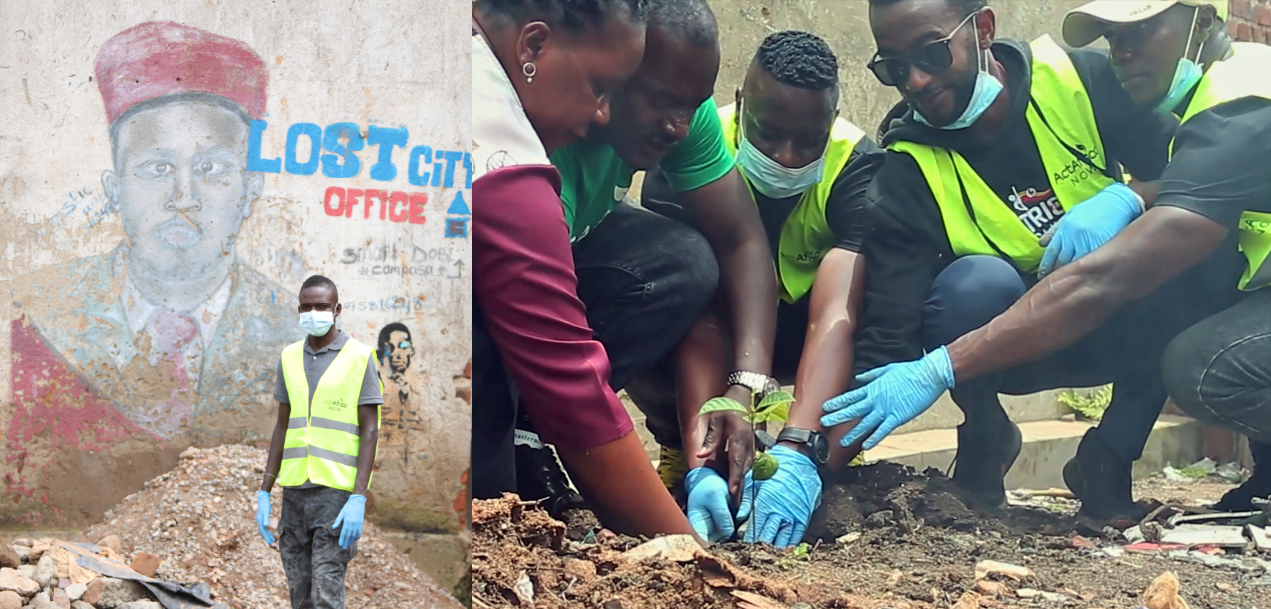
Revisiting the self-named Lost City area of Kawempe was both inspiring and thought-provoking. The area here is extremely vulnerable to flooding, with informal settlements built on a swamp plain. There are few green areas, and the majority of inhabitants are living on less than 10,000 Ugx per day. When we first approached this community last year, it was obvious that the members were passionate about making positive changes in their environment.
One year later, it is a testament to their hard work and enthusiasm to protect their environment that trees are still alive despite the challenges of unhealthy soil, goats eating anything, hungry ducks, flooding, and being uprooted by humans.
Since we left (and of their own accord), the Lost City community members have constructed barriers around saplings to prevent them from being tampered with. These barriers are made out of old bits of wood, mesh, metal sheets, and anything the community can find – a testament to their efforts to protect their saplings, despite the lack of money. This pilot brilliantly shows that poverty need not be the deciding factor in how well a community can care for their environment. With an engaged community to safeguard trees and continuously care for them, greening in slum areas is possible.

“We are looking after our mangoes so that we can eat mangoes from our tree in the future. We only request some support with manure to help them grow better.” – Kawempe resident and environmental steward.
Food security is a big issue in this area with few trees to provide cheap nutrition like avocados and mangoes. There is no healthy soil to grow greens, and residents are largely dependent on small shops and local markets for their food.
The soil in this area is of very poor quality, and thus the trees have grown to about a quarter of the size they did at our Kira road activation, which had healthy soil over the same period of time. Adding manure may be an essential part of future activations to give the trees the nutrition they need to grow to reach adult size where they are less vulnerable.

We look forward to engaging with this community on a bigger scale going forward and putting Lost City’s efforts at improving their environment firmly on the map – an inspiration for all community engagements going forward.



